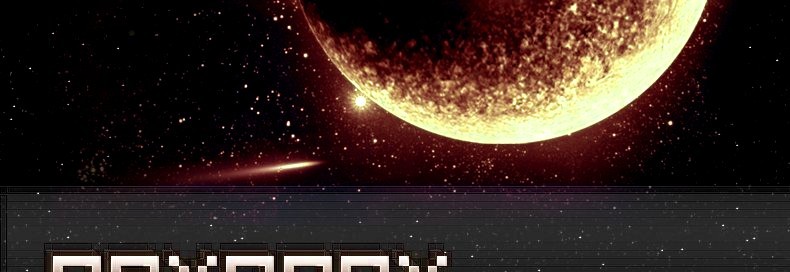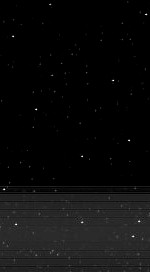Changeset 3018 in orxonox.OLD for orxonox/branches/bezierTrack/src/vector.cc
- Timestamp:
- Nov 28, 2004, 1:31:21 PM (21 years ago)
- File:
-
- 1 edited
-
orxonox/branches/bezierTrack/src/vector.cc (modified) (1 diff)
Legend:
- Unmodified
- Added
- Removed
-
orxonox/branches/bezierTrack/src/vector.cc
r3017 r3018 845 845 846 846 847 /**848 \brief Creates a new BezierCurve849 */850 BezierCurve::BezierCurve (void)851 {852 nodeCount = 0;853 firstNode = new PathNode;854 currentNode = firstNode;855 856 firstNode->position = Vector (.0, .0, .0);857 firstNode->number = 0;858 firstNode->next = 0; // not sure if this really points to NULL!!859 860 return;861 }862 863 /**864 \brief Deletes a BezierCurve.865 It does this by freeing all the space taken over from the nodes866 */867 BezierCurve::~BezierCurve (void)868 {869 PathNode* tmpNode;870 currentNode = firstNode;871 while (tmpNode != 0)872 {873 tmpNode = currentNode;874 currentNode = currentNode->next;875 delete tmpNode;876 }877 }878 879 /**880 \brief adds a new Node to the bezier Curve881 \param newNode a Vector to the position of the new node882 */883 void BezierCurve::addNode(const Vector& newNode)884 {885 if (nodeCount != 0 )886 {887 currentNode = currentNode->next = new PathNode;888 }889 currentNode->position = newNode;890 currentNode->next = 0; // not sure if this really points to NULL!!891 currentNode->number = (++nodeCount);892 return;893 }894 895 /**896 \brief calculates the Position on the curve897 \param t The position on the Curve (0<=t<=1)898 \return the Position on the Path899 */900 Vector BezierCurve::calcPos(float t)901 {902 if (nodeCount <=4)903 {904 // if (verbose >= 1)905 // printf ("Please define at least 4 nodes, until now you have only defined %i.\n", nodeCount);906 return Vector(0,0,0);907 }908 PathNode* tmpNode = firstNode;909 910 Vector ret = Vector(0.0,0.0,0.0);911 double factor;912 int k=0;913 while(tmpNode!=0)914 {915 k++;916 factor = ncr (nodeCount, k);917 918 for (int j=0; j<nodeCount-k; j++)919 factor*=(1-t);920 for (int j=0; j<k; j++)921 factor*=t;922 ret.x += factor * tmpNode->position.x;923 ret.y += factor * tmpNode->position.y;924 ret.z += factor * tmpNode->position.z;925 926 tmpNode = tmpNode->next;927 928 }929 return ret;930 }931 932 Vector BezierCurve::calcDir (float t)933 {934 PathNode* tmpNode = firstNode;935 BezierCurve* tmpCurve = new BezierCurve();936 Vector ret;937 Vector tmpVector;938 939 while (tmpNode->next != 0)940 {941 tmpVector = (tmpNode->next->position)- (tmpNode->position);942 tmpVector.x*=(float)nodeCount;943 tmpVector.y*=(float)nodeCount;944 tmpVector.z*=(float)nodeCount;945 946 tmpCurve->addNode(tmpVector);947 tmpNode = tmpNode->next;948 }949 ret = tmpCurve->calcPos(t);950 ret.normalize();951 952 return Vector (0,0,0);//ret;953 }954 955 /**956 \brief returns the Position of the point calculated on the Curve957 \return a Vector to the calculated position958 */959 Vector BezierCurve::getPos() const960 {961 return curvePoint;962 }963 964 965 int BezierCurve::ncr(int n, int i)966 {967 int ret = 1;968 for (int k=1; k<=n; k++)969 ret*=k;970 for (int k=1; k<=i; k++)971 ret/=k;972 for (int k=1; k<=n-i; k++)973 ret/=k;974 975 return ret;976 }
Note: See TracChangeset
for help on using the changeset viewer.











